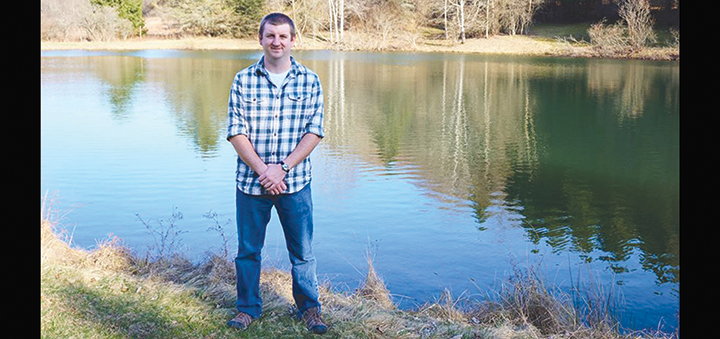Making The Most Of Your 31 Days
Published:
May 1st, 2019

By Eric Davis
Sun Outdoor Columnist
This morning marked the beginning of the spring turkey season in New York. While the weather forecast at the time of writing this article calls for rain Thursday and Friday, at least it is supposed to be nicer over the weekend. If you are like me and your work schedule only allows for limited hunting opportunities, there are some things you can do to improve your chances of success this season.
Knowing where the birds are saves you from going out only to hear nothing and come home disappointed. Evening drives can help you pinpoint roosting areas when you see birds out just before dark. If possible, try to roost turkeys the night before your hunt. Go out at sunset or a little after and listen for birds to gobble after they fly up to their roost for the night. If the birds won’t gobble on their own, use an owl hoot or crow call to get a shock gobble. If those calls don’t work, try giving a simple series of yelps or a fly-up cackle. Don’t go too crazy with the turkey sounds though, save them for the morning!
Turkeys rely heavily on their sight and their vision to alive. Modern decoys have ultra-realistic paint schemes and body poses that will keep a tom’s attention. A jake decoy paired with a hen can cause a tom to come in and look for an easy fight. A tom decoy can be effective on toms that hang out together or on a dominant bird, but can cause sub-dominant toms to keep their distance. If you use a jake or a tom decoy, have the decoy facing you and approaching toms will come in to square up for a fight face-to-face. With the bird facing away from you and focused on the decoy you can get your firearm (or bow) ready for a shot. Also, be extremely careful when using these decoys and be alert to the possibility of another hunter mistaking it for a real turkey. If this happens, don’t wave or make any movement. Speak up in a loud voice to let them know you are there.
Another way to minimize detection is to use a ground blind. These allow you to sit inside and look out small openings to see around you. These can be crucial for rainy day hunts so you can stay somewhat dry and hunt longer. They also excel on hunts with new hunters, young or old, as they help hide fidgeting and other movement. The downside to using a ground blind is that they are typically heavy and noisy to set up. This is where roosting birds the night before is handy because then you can put the blind up, stake it down for the night, and just get inside in the morning.
Understanding the turkey’s simple thought processes can help put you in the right place at the right time. Going back to a turkey’s main survival instincts using sight and sound, you can plan where to hunt based on certain weather. When it gets windy or it’s raining, it is difficult to hear anything in the woods. This would allow predators to sneak up on a turkey without it hearing them. Therefore, turkeys will head for open areas where they can see farther, such as agricultural fields, to make up for the decrease in their hearing ability. These large areas are ideal for using decoys as the turkeys would be skeptical to approach the sound of another turkey when they know they should be able to see it. Midmorning can be a difficult time to find ambition after getting up so early but hens will leave their toms so they can go sit on their nests a few hours after flying down. The toms then begin looking for any additional hens that are still around. Their desperation to breed can cause them to come in fired up without realizing it is too good to be true. Some hunters will sleep in and start their hunting after 9 am later in the season. Not only are they looking for the freed-up toms, they also tend to have less competition from other hunters who call it a day and go get breakfast by then.
Comments










